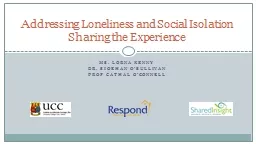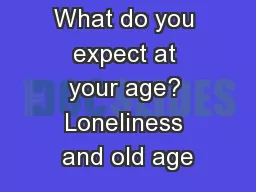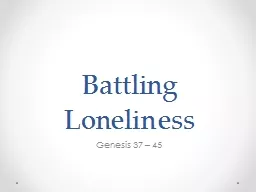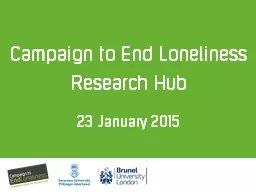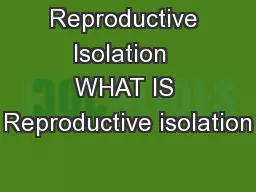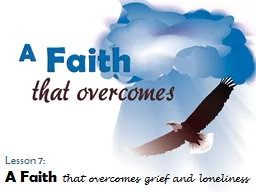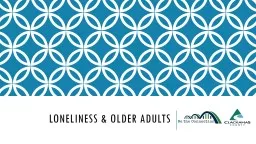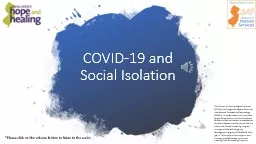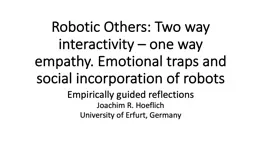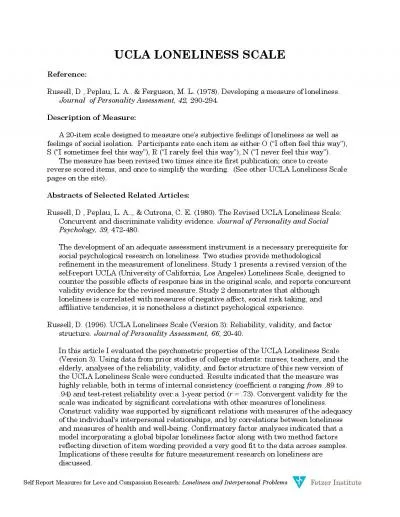PPT-Addressing Loneliness and Social Isolation
Author : phoebe-click | Published Date : 2016-11-15
Sharing the Experience Ms Lorna Kenny Dr Siobhan OSullivan Prof Cathal OConnell Introduction Collaboration between UCC and Respond Housing association Funded by
Presentation Embed Code
Download Presentation
Download Presentation The PPT/PDF document "Addressing Loneliness and Social Isolati..." is the property of its rightful owner. Permission is granted to download and print the materials on this website for personal, non-commercial use only, and to display it on your personal computer provided you do not modify the materials and that you retain all copyright notices contained in the materials. By downloading content from our website, you accept the terms of this agreement.
Addressing Loneliness and Social Isolation: Transcript
Download Rules Of Document
"Addressing Loneliness and Social Isolation"The content belongs to its owner. You may download and print it for personal use, without modification, and keep all copyright notices. By downloading, you agree to these terms.
Related Documents

